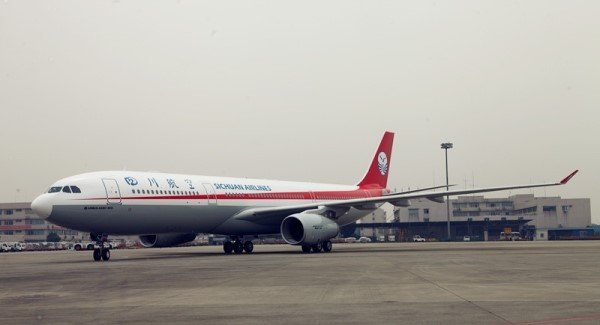New China route to Chengdu, home of the panda

From December Chinese operator Sichuan Airlines will fly directly between the metropolis of Chengdu and Copenhagen. This will be CPH’s third new route to Asia this year.
The official China-Denmark Tourism Year of 2017 has really kick-started air traffic between the two countries.
On 10. December, Chinese operator Sichuan Airlines will take off from Copenhagen Airport for the first time to fly to the city of Chengdu, famous as the panda capital of the world. The service will operate twice weekly.
It is only a few months since Air China opened its first route from Beijing to Copenhagen, while on 2 May Cathay Pacific started up flights from Hong Kong to Copenhagen. No Chengdu is announced. So this year CPH has now landed four new routes to Asia.
“I think we should be proud of our success in attracting three new routes off the back of the China-Denmark Tourism Year of 2017,″ says Danish Minister for Industry, Business and Financial Affairs Rasmus Jarlov. “China is an important market for Denmark not just in terms of trade, but also in terms of tourism, where I see huge potential.”
“Currently, only a small proportion of Chinese travel to Europa, but as the country’s middle class grows, we can expect far more Chinese tourists to the Nordic region,″ says Rasmus Jarlov. “It’s also therefore extremely positive that we can now offer the Chinese the option to travel from a number of places in China. Our hard work in the tourism year has borne fruit.”
Copenhagen Airport is also delighted to welcome yet another Chinese airline:
“Sichuan Airlines really opens up the door to the whole of Southwest China, where prosperity has grown considerably in recent decades,″ says Copenhagen Airport’s CEO, Thomas Woldbye. “The metropolis of Chengdu alone is home to 14 million people, so we expect the new route to be of major benefit for both tourism and trade.”
Thomas Woldbye stresses that the China-Denmark Tourism Year of 2017 has really showed that Denmark is an interesting destination for Chinese travellers: “But it requires good direct flight connections, like the new route to Chengdu, if the potential is to be realised. At Copenhagen Airport, we’ve worked hard in recent years to expand the number of intercontinental routes – and now we can harvest the fruits of that labour. In May, we opened routes to Hong Kong with Cathay Pacific and to Beijing with Air China – and now from August there will be the route to Chengdu with Sichuan Airlines.”
The new route to Chengdu will significantly increase the contribution of aviation to the Danish economy.
“Every time Denmark gets better connected with new markets, our trade increases and our economy is strengthened. The contribution of aviation to Danish GDP is high and steadily rising, and it’s estimated that this route will increase Danish GDP by around DKK 175 million a year going forward,” says Thomas Woldbye, referencing an analytical model prepared for Copenhagen Airport by Copenhagen Economics.
Between 2005 and 2015, traffic to and from Copenhagen Airport contributed DKK 31 billion to Denmark’s wealth.
An important part of the work of securing new routes is being able to offer new airlines an opportunity to promote Denmark and Copenhagen as destinations. This is being done through the private-public route development programme Global Connected, which is managed by Wonderful Copenhagen.
“The new route to Copenhagen from Chengdu is another result of a strong, unified private-public effort across the state, local government, regions and national borders in the route development programme Global Connected,” says Wonderful Copenhagen’s CEO, Mikkel Aarø-Hansen. “With the experience of the Chinese market we’ve acquired over many years, we’re ready to promote Copenhagen – to the benefit of a broad geography – targeting Chinese travellers in the Chengdu region.”
For the past few thousand years, Chengdu has been one of Southwest China’s cultural centres, and around 1,000 years ago it was the country’s capital. Today, Chengdu, with its 14 million inhabitants, is an industrial centre and transport hub in West China.
In more recent times, the city has become famous as the "home of the panda" because it is here that the Giant Panda Breeding Research Base is located. Next year, that base will be supplying pandas to Copenhagen Zoo in Frederiksberg.
The province is no less famous for its outstanding spicy food. Many people travel to Chengdu to sample the famous Sichuan cuisine, which is best experienced in the Wide and Narrow Alleys of Qingyang District.
Thomas Woldbye, who lived in China for several years, has no hesitation in naming his favourite Sichuan dish: “It has to be ‘ants climbing a tree’, a very spicy dish of glass noodles and pork.”


